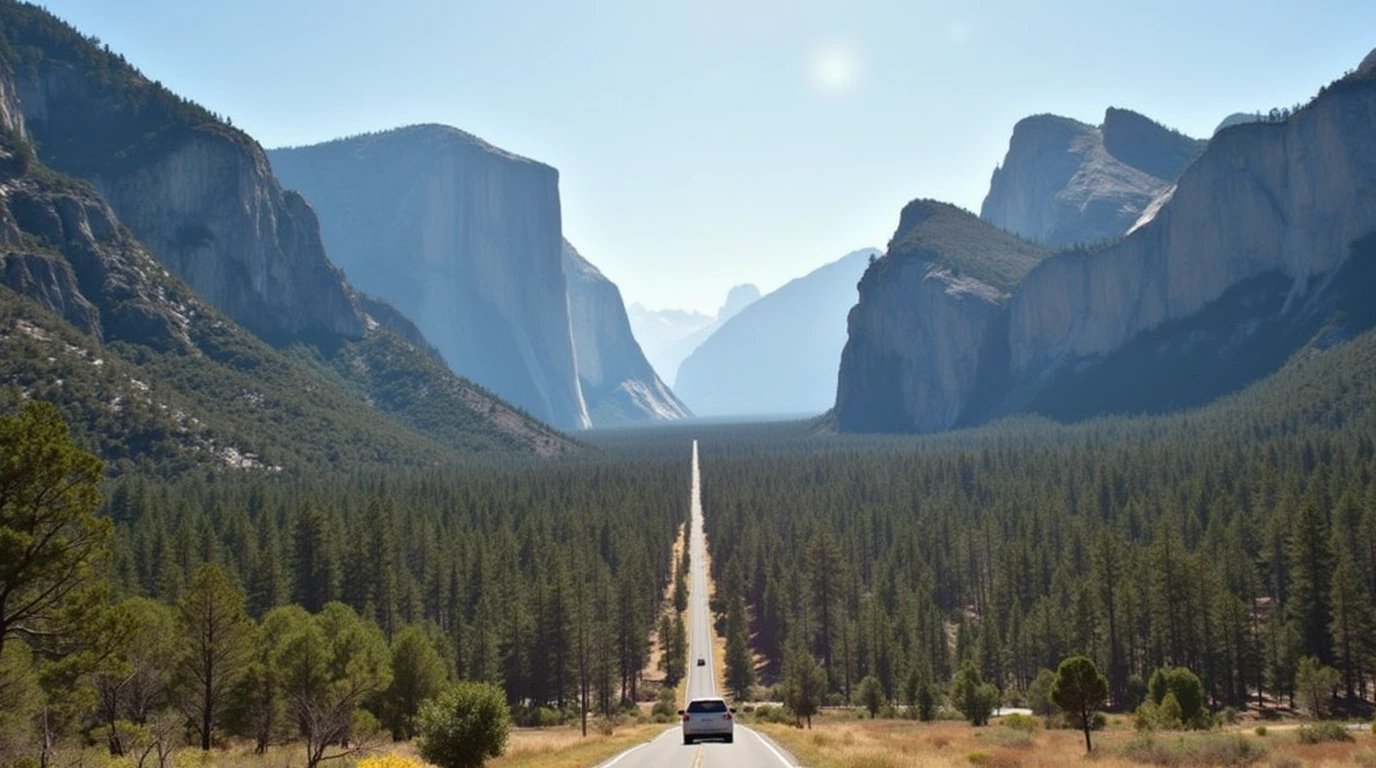The Ultimate Los Angeles to Yosemite Road Trip Guide: Two Routes to Natural Wonder
Table of Contents
Los Angeles to Yosemite, The journey from the bustling streets of Los Angeles to the majestic granite cliffs of Yosemite National Park offers travelers an quintessential California experience. Whether you’re drawn to El Capitan’s towering face, the misty veil of Bridalveil Fall, or the iconic profile of Half Dome, this road trip delivers an unforgettable adventure through California’s diverse landscapes.
Setting Your Course: Two Distinct Paths to Paradise
Your journey to Yosemite presents two main routes, each with its own character and charm. The Bakersfield route spans 310 miles and takes roughly 5 hours and 50 minutes of pure driving time, while the Mammoth Lakes route covers 360 miles in about 6.5 hours. Though both paths lead to the same destination, they offer distinctly different experiences.
The Bakersfield Route: Urban Comfort Meets Natural Beauty
Following US Highway 101, Highway 170, Interstate 5, CA-99, and CA-41, the Bakersfield route serves as the more straightforward path. This route takes you through Santa Clarita, Bakersfield, and Fresno, offering frequent access to urban amenities while gradually transitioning from city landscapes to California’s agricultural heartland.
The journey begins through Santa Clarita, where you can stretch your legs at Castaic Lake, a perfect first stop for those needing to ease into the journey. Continuing north, Bakersfield welcomes travelers with its rich country music heritage at Buck Owens’ Crystal Palace and the historic Fox Theater. The Padre Hotel provides a comfortable overnight stay, combining historic charm with modern comfort.
For those interested in local history, the Kern County Museum offers fascinating insights into California’s oil and agricultural heritage. As you progress toward Fresno, opportunities for scenic detours abound, including Isabella Lake and the magnificent Sequoia National Forest.
The Mammoth Lakes Route: A Scenic Mountain Adventure
The alternative route via Mammoth Lakes offers a more dramatic natural journey. Following Highway 110, CA-170, I-5, CA-14, and Highway 395, this path treats travelers to views of Death Valley, Kings Canyon, and the stunning Inyo National Forest. While this route has fewer urban facilities, it compensates with breathtaking outdoor experiences.
Mammoth Lakes serves as the crown jewel of this route, offering year-round attractions. In winter, it’s a world-class ski destination, while summer brings endless hiking and mountain biking opportunities. The Village Lodge provides excellent accommodation with easy access to both summer and winter activities.
This route also takes you past Mono Lake, whose otherworldly tufa towers create an almost lunar landscape. However, travelers should note that Tioga Road, which connects Mammoth Lakes to Yosemite, closes during winter months, necessitating careful seasonal planning.
Timing Your Journey: Seasonal Considerations
Yosemite’s seasonal changes dramatically affect both routes. Summer brings warm temperatures and peak crowds, particularly at popular viewpoints and hiking trails. Winter offers a more serene experience with fewer visitors, though some roads may close due to snow.
Spring paints the park with wildflowers and roaring waterfalls, though Memorial Day crowds can be substantial. Fall might be the sweet spot, offering pleasant temperatures, fall colors, and fewer visitors, though early snow remains possible at higher elevations.
Practical Planning Tips
Regardless of your chosen route, plan for at least 2-3 days to fully appreciate the journey. Yosemite, as America’s second-oldest national park, deserves more than a rushed visit. Its diverse ecosystem hosts over 260 bird species, countless hiking trails, and opportunities for both adventure and relaxation.
Near Yosemite, the Evergreen Lodge offers an ideal base for exploration, combining rustic charm with modern amenities including a swimming pool, restaurant, and hot tub. Its location provides easy access to the park while maintaining a peaceful mountain atmosphere.
Essential Considerations for Both Routes
Bakersfield Route Advantages:
- More frequent service stations and dining options
- Easier winter driving conditions
- Greater flexibility for last-minute accommodation
- Better cell phone coverage
Mammoth Lakes Route Benefits:
- Superior mountain and desert vistas
- Less traffic congestion
- Better opportunities for outdoor activities
- More dramatic elevation changes
- Access to additional natural attractions
Making the Most of Your Journey
While driving times might suggest a single-day trip is possible, rushing through either route would mean missing out on countless natural wonders and local experiences. The journey from Los Angeles to Yosemite represents more than just a drive – it’s an opportunity to experience California’s remarkable geographic diversity.
Whether you choose the urban conveniences of the Bakersfield route or the natural splendors of the Mammoth Lakes path, plan your stops in advance, keep your camera ready, and remain flexible with your schedule. Remember that Yosemite’s 150-mile inland location from Los Angeles means you’re traversing a significant portion of California, each mile offering its own potential for discovery and adventure.
Pack appropriately for seasonal weather changes, carry plenty of water, and don’t forget to check road conditions, especially during winter months or when traveling the Mammoth Lakes route. With proper planning and an adventurous spirit, your Los Angeles to Yosemite road trip will create memories to last a lifetime.
There are no reviews yet. Be the first one to write one.








One Comment
Comments are closed.